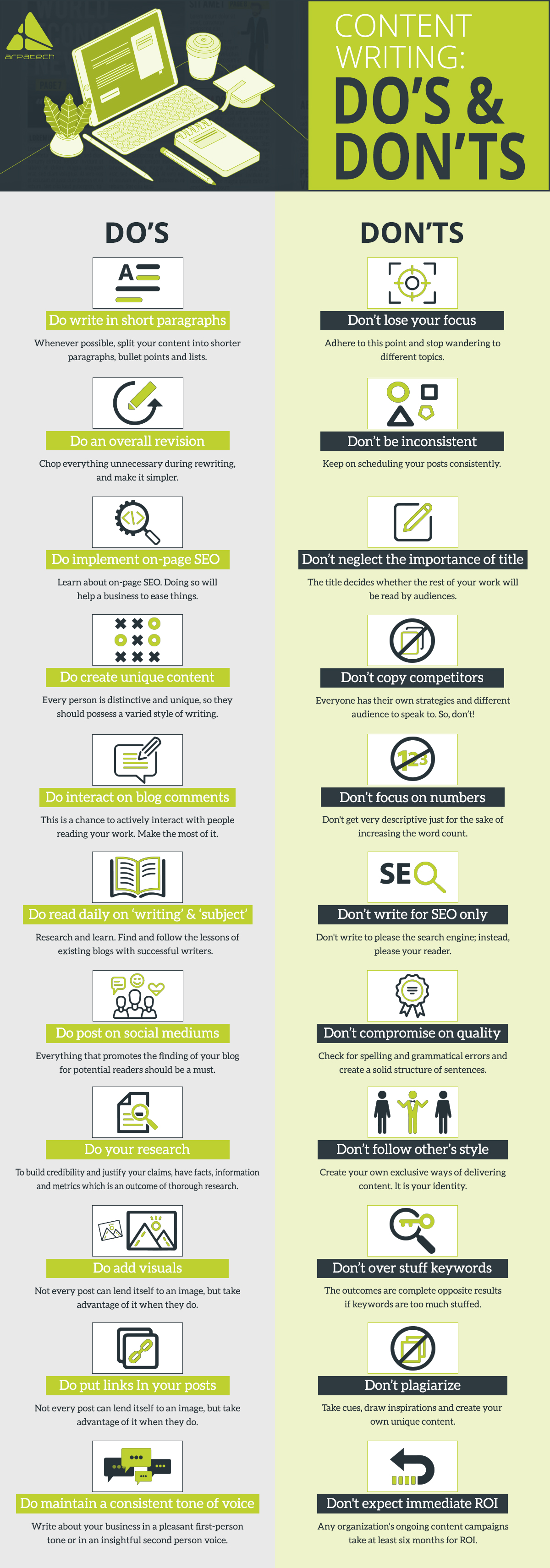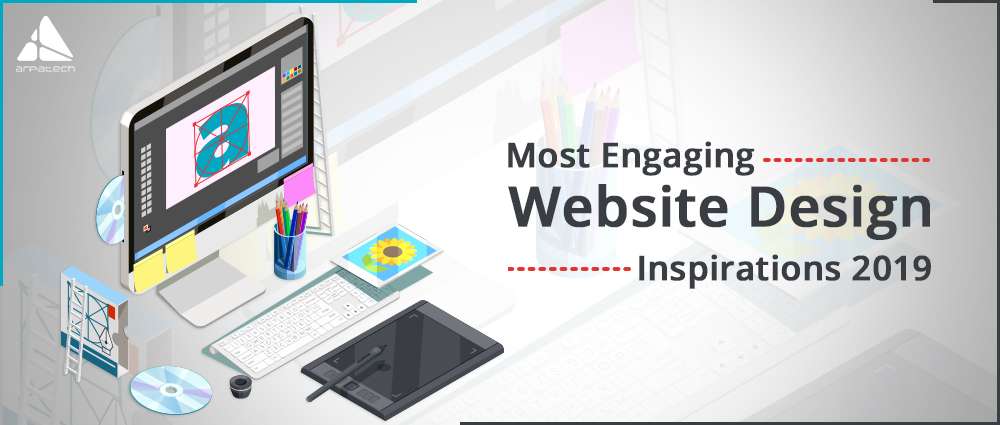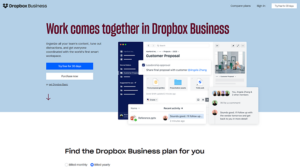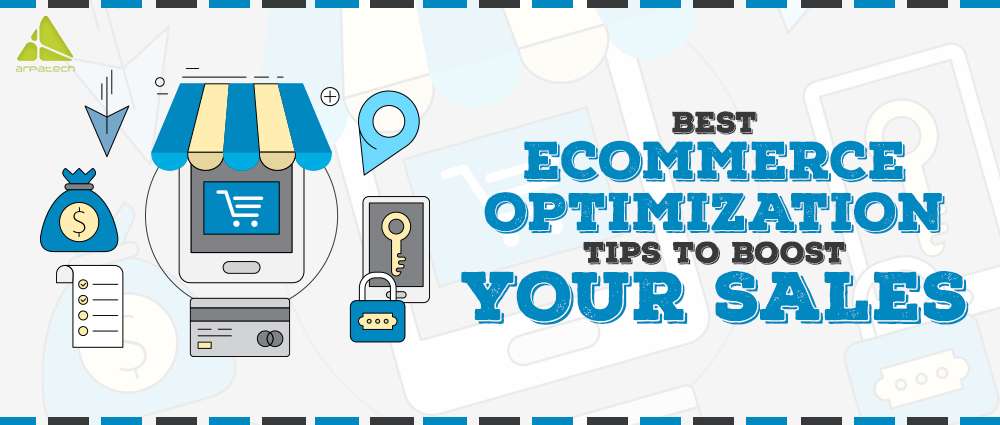Latest Blogs
Software Development
Ramsha Khan
Dec 11, 2025

How Custom Web Development Benefits your Business
These days, all the major firms are opting for customized development of web development. It’s high time to build or update your website. Your business has unique aspects, and thus the look and feel of your website should be reflective of your brand.
While your company website’s look and design may be the first thing visitors note, it’s the functionality, features loading time, and scalability of the site that truly makes you successful throughout the Internet.
One of the greatest things you can do to ensure your business’ success is to incorporate custom web development. Custom website development not only helps improve your business visibility, it can also help your business in the following ways.
Using a website builder or CMS software usually offers you a readymade template to deal with, unless, you choose to have one built-in feature, which may be pricey. This theme enables you to put certain items in predetermined styles on websites, and this can create an impression of uniqueness when you are really restricted to the constraints of the theme.
There’s no theme with a customized website. The website’s architecture is based on your preferences and has no constraints or limits on how the website looks. It implies that no two websites that are built, look the same.
Such uniqueness will therefore distinguish your site from your competitors allowing you to create your site around the customer journey and concentrate on the design and development on the idea that your users will most certainly follow.
Most website builders or CMSs involve a number of built-in functionalities. That is to serve as many different users as possible, allowing such systems and platforms to reach the biggest customer base available. The dilemma is that this kind of functionality comes with every website created using these tools, independent of whether or not it requires it.
Website loading times are vital to your business which can be the difference between landing and losing a customer, particularly when customers look at websites using mobile broadband on mobile devices. According to research, more than 50 percent of website visits are abandoned if a page takes more than three seconds to load.
Custom website development helps you to minimize unnecessary functionality. In fact, building each one of the site’s functions allows you to optimize not only the functionality but also the design for these functions, further decreasing load times.
Security of the website has always been a popular topic on the web. Through the use of an existing platform to build a website, whether it’s a website builder or an open source CMS, opens up vulnerabilities which impact all other websites that use these platforms. It means that the vulnerability found on another website that has used the same platform, could be used to spread all other sites using that same version of the platform. The important point here is that many businesses that custom builds websites are also hosting these websites for the customer so the hosting environment will be optimized for the security of both the hosted websites and applications.
Having to share a database or design platform with a number of other websites, causes you to be attacked. If a website with which you share server space is shut down or infected with a virus, Google can penalty every website on that server until the issue is resolved.
Most of the website builders are neither scalable nor flexible suggesting their lifespan is very limited for any serious business. Custom website design offers customers with a user-friendly approach. Developers can scale the website’s design process and make necessary adjustments whenever needed. At the beginning custom developers set up a proper structure when designing the site’s roadmap. The website can be customized as needed or on an ongoing basis. Template websites do not provide us with a customization option, as many unnecessary codes that cannot be edited, create it.
Open source CMS provides much more scalability and flexibility although it comes at a price and usually requires a professional or business to be able to manage the system. With custom building, you can build your own website with scalability in consideration.
The ability and freedom for optimization for your business is one of the biggest and most important reasons to customize your website. Even though with open source CMSs, you can do a lot this is the most crucial part. It should not only be a marketing and branding function to build a website.
You can create whatever you want on your website from the start rather than going through thousands of functional and development choices. Including designing features that will support your business processes, you can also create a customer journey that best fits your business and customers.
In addition to simplifying your customer journey, you can also use a tailor-made website to automate many of your business functions.
In a nutshell; here are some of the benefits of custom web development for effective management of your business.
Before you decide to go for either web design or website template, it’s better to consider what’s going to be more beneficial. It’s also wise to bear in mind that you want your business to stand out among others. You may be investing more initially on Custom Web Development, but it can be a great investment in the future success of your business.
Saima Naz
Nov 11, 2019

Amplify Your Store’s Success with Big Data
Big data can facilitate online businesses in multiple ways. It has emerged as the basic ingredient of any successful marketing strategy which has revolutionized every platform of the industry.
Big data is constantly creating new challenges and opportunities that the information revolution has created. Predicting trends optimizing prices and predicting demand are just a few of the areas in which ecommerce businesses leverage data to gain a competitive advantage. The guesswork has been eliminated, and ecommerce businesses may now make strategic decisions about how to run their online businesses efficiently.
It is a buzzword which is referred to an immensely huge data sets which are analyzed to understand human behaviors and trends. This word has its roots in business management.
Businesses are built on the base of Big data since buyers are connected with sellers via online stores and mobile apps. Big data, artificial intelligence, augmented and virtual reality have almost become an essential part of ecommerce scenario. But specifically, big data has emerged as a key contributor in bringing success to eCommerce. It has become an important part of all scale businesses today as it helps retailers to achieve their goals rapidly and effectively.
There are many ways in which Big data benefits businesses. Some of them are listed below.

By observing the customer’s browsing and shopping history you get to know easily what their preferences are and it can only be done with the help of big data. Once they know it, they are able to recommend the items of customer’s interest. The data is used to analyze to create recommendations. With this, customers have the benefit of looking for the items of their interest meanwhile owners earn the increasing profits. Not only does it help in understanding customer behaviors but also performs the requests of the large number of buyers within a short period of time.

Although people have shown concerns personal data reveal. But in reality, the data is only used productively in order to improve customer experience which plays a crucial role in any ecommerce shopping experience. And if it is not up to the mark, it can ruin real shopping experiences. Because if a customer is not satisfied, not only they’ll stop coming to your store but forward their reviews to other people as well. So, in case of customer experience, big data can be used to analyze delivery times and help companies in knowing their potential and solve the problems before customer gets involved. Also, internet frauds can also be tracked with the help of this data.

Amazon is one of the pioneers in bringing advance shopping experiences. They use big data tools to adjust pricing. They compare prices of the products with other retailers and then adjust their own prices accordingly. Pricing is a key element in making any ecommerce successful because people always look for the sites which offer worthy prices. Hence, the best proposition offered is the dynamic pricing, which means the price should be responsive to the user’s demands and competitor’s prices. And without any second thought, big data analytics is the most reliable tool which helps sellers with dynamic pricing.

Big data can help take a look on various channels of your company. Online retailers can remove the guesswork by introducing trend forecasting algorithms while predicting trends of what creates a buzz online. You can use big data to find out which product made the best sales over the period of a year. You can also measure your customer’s fashion or choice preferences which helps in predicting and thus creating better experience for them. Moreover, you can also analyze which colors, styles or cuts are famous which helps in keeping the right products in stock and offer the best rates possible.

Right stock of inventories can be a big challenge for online sellers. With the advent of big data, this problem has been solved. You can now build an efficient system to manage supply chain. Too much inventories can bring storage expenses and risk that the inventories might not be useful meanwhile the inadequate stock means the customers will switch to other ecommerce stores. Big data analytics can help in calculating the optimal inventory stock along with the prediction of booming sell in the festive seasons. Also, the companies are making use of IOT to collect data on huge range of conditions to redefine supply chain intelligence. Every e-commerce development company is keeping an eye on these factors.
Big data analytics lays the groundwork for new ways to deliver enhanced customer service by knowing and evaluating customer expectations and behaviors. Big data analytics also helps you learn the positives and negatives of your own business, helping you to build better product designs better pricing plans and better competitive capabilities. It has brought a huge shift to the ecommerce industry, but there are still endless possibilities to be explored.
Saima Naz
Nov 8, 2019

Content Writing: Do’s and Don’ts
Content is as critical as your website’s architecture and functionality because it determines the performance of your search engine results, improves access to your page and positions your business as an expert in the market. And in today’s content marketplace, the ability to gain leverage content for business outcomes is measured by both quality and quantity.
Your website markets your business. If the content writing of your website is sloppy, bloated, or confusing, it will make your brand impression negative — and then you will lose customers, regardless of how good your products or services are.
Here we have listed some do’s and don’ts to make it easy for your business to excel through content marketing.

Since screen read speeds are slower than print speeds, people can skim the text quickly. Long stretches of text, particularly while reading on computers and tablets, are hard for users to read. Whenever possible, split your content into shorter paragraphs, bullet points and lists. Sometimes, work in some subheads whenever you can.
Write, edit and revise. Go back and think how to smooth the rough edges of your writing after you’ve created a first document. Chop everything unnecessary during rewriting, and make it simpler.
Learn about on-page SEO. Doing so will help a business to ease things, whether or not they have a SEO team. Think about internal linking processes to transfer link capital to sites that you want both readers and search engines to highlight.
In addition to learning the topic you write for, learn about that niche in reputed publications on a regular basis. Find and follow the lessons of existing blogs with successful writers. A quick ‘writing tips’ search on Google provides more than a million pages. Whether from colleges or some lesser-known writers, you’re sure to find something there.
Attempting to give your content piece a new makeover is what differentiates your article or blog from everyone else’s. To attract a credible audience, this specific perspective is important. You may take inspiration from their style, but you don’t have to copy that. Because every person is distinctive and unique, so they should possess a varied style of writing.
This is a chance to actively interact with people reading your work Not all comments have to be replied, but be sure to respond to those who do. Even sometimes just showing up and posting “Thanks for reading my blog” is worth it.
Posting different ways on a number of social media platforms can let you engage with a range of audiences Don’t hesitate about using social media to share your posts Everything that promotes the finding of your blog for potential readers should be a must
.
Although readers come for information and creativity on your website, they also need to be visually stimulated. Not every post can lend itself to an image, but take advantage of it when they do.
One needs to have vast knowledge about the topic they are writing on, particularly in the B2B industry. To build credibility and justify your claims, have facts, information and metrics. To keep new ideas and content flowing, keep up with the research. No research should be directly followed by writing and planning.
Whether you are linking to other blogs or websites that contain great information or linking to past posts on your own site, do it whenever you can. It will not only help boost the number of clicks, but also help with the search engine rankings of your blog.
Make sure every piece of content is written for one single topic only. Adhere to this point and stop wandering to different topics. It is completely okay to discuss the related stuff; just make sure you don’t mix different ideas into one piece of content. It hinders user’s momentum of reading.
Never copy anyone’s content and publish it. I repeat, never! Instead, take cues, draw inspirations and create your own unique content. Your content is what inspires people when it is written in your voice of writing. It is what holds them there.
Everyone has their own strategies and different audience to speak to. The only time you must pay attention to the competitors of your company is when you are writing for keyword rankings or top linking websites.
Keep on scheduling your posts consistently. If you are doing it twice a week, schedule them at the same times on the same days based on analytics of when that website typically gets its most traffic.
Keywords are a way of making the content relevant, readable and search-friendly. But it does the complete opposite when you start stuffing in keywords.
The title decides whether the rest of your work will be read by audiences. If the title does not catch attention, provoke an emotion, or make the reader want to know more about the topic, there are high chances that you won’t achieve the desired results.
Getting into someone else’s shoes and being willing to write in just the same way is not what you should be doing. The writing style is the writer’s persona, its own identity. So, create your own exclusive ways of delivering content.
Nobody gets to read every word on the page. Readers have short spans of attention, and they just scan your content for the main takeaways Usually, some interesting writers are concise in their write ups. They understand the fact that to deliver thoughts or points, you don’t need to get very descriptive and they avoid writing just for the sake of increasing the word count.
A lot of businesses or organizations expect to get ROI immediately in a matter of a few days or weeks. Any organization’s ongoing content campaigns take at least six months (after some strong SEO work) or more.
Don’t write to please the search engine; instead, please your reader. SEO strategy is needed for what content is required, so don’t put completely focus on it. Although SEO is vital for ranking, the content that is written must be the main focus and SEO shouldn’t let you lose it.
just because you’ve committed to writing multiple articles doesn’t mean the articles should be sub-par reading. Submitting sloppy work is the easiest way to damage your own credibility Therefore, check for spelling and grammatical errors and establish a solid structure of sentences throughout.
Saima Naz
Nov 7, 2019

Most Engaging Website Design Inspirations 2019
Your first impression is crucial for your business. And nobody gets the second chance to make the first impression — that’s the reason why your homepage is inevitably one of your website’s most vital pages. The greatest design influence you to take action. Throughout the day you were clicking and scrolling, and then you stopped. It might be an amusing interaction, a stunning picture, or just something you have never seen before. You just get hooked.
Your website can serve new and potential customers as an online gallery of your product and service offerings. An amusing website experience can take your businesses to a completely different level. In this article,
we’re going to show you some of the best websites with the most amazing designs so you take inspiration for your business website and may be give a redesign to your website.
Here are some of the best website designs to look up to in 2019.

While talking about the list of brilliant websites, Apple can’t go missed. And the innovative giants have gone big this year.
To promote their products, they have taken hyper-realistic, sensational image taken from unique angles. The website is inviting, stylish, simple and tidy, making it possible for the brand to show off its products and make them the central focus. In fact, this is their website’s main purpose- selling and advertising their products.
The design of their website has quite an efficient use of white space to ensure that as a customer, the product on the picture slider catches your eyes. The homepage is fairly brief, especially if you miss the footer, which will stop people from needing to scroll to find what they are looking for. Most of us are not able to compete with this. But selling ‘ high-quality product images ‘ is and has always been the same fundamental precept. So put the effort in your pictures and think from buyer’s perspective.

Airbnb offers the search form for the destination and date that most travelers are searching for, right on front, to direct visitors to the next logical step. The search type is “smart,” which means that if they are logging in, it will auto-fill the last request of the user. The primary call-to-action contrasts with and stands out from the background; but the secondary CTA provided for hosts is also visible above the fold.
It presents recommendations for excursions and getaways that Airbnb users can book on the very same site as their lodging to make visitors more excited to book their trip on the site. Moreover, it suggests which of these deals are most demanding and famous among other users.

Dropbox is a great example of all-around successful marketing. The homepage of the company is no different. You have a subtly askew hero picture that attracts the eye and two CTAs — including one that uses a dark background to draw more attention as it is for the tool’s paid version.
The home page and website for Dropbox is the quintessential example of elegance. It restricts its use of copy and visuals and includes white space. There’s a very straightforward marketing copy. Dropbox knows and understands the target audience and practice drills down on points of pain that directly affects them, including security and efficiency. Also, the navigation is pretty stripped down, with “Compare plans” choice.

Less is more in the case of web design. A cliché, but it is one of 2019’s most effective design trends. This brand of sparkling water has developed a site that is seriously minimalist but thought-provoking.
It shows bold colors behind clear bottles, with a visual flow below that is easily scannable. It also features the entire X-shaped logo, emphasizing the essential brand recognition throughout the website.
You make it easier for your customers by avoiding complicated interface models. The page loads faster, lowering the bounce rate and focusing on the motive of your brand.
Seriously Unsweetened have used white space with simple but contrasting color schemes, focusing on minor details, such as variations in the logo, and using headers that clearly define each page.

This is a website that raises the bar. It provides insurance quotes in just five minutes using CUI (Conversational User Interface) integration.
Lemonade is also an excellent example of a one-page website that is engaging and attractive. Spread with some well-placed action buttons such as ‘Get Prices and Switch’ which is incredibly easy to navigate. Ending with Maya which is a chatbot who interacts with you on a human level. She’s got a face! Owing to its user interaction, this type of web design is really useful, and it evokes credibility. The transitions are also smooth, with answer forms prominently displayed.
Writing the chatbot script in small segments is a simple tip, predicting every possible answer to queries. Also, teach them the most common misspellings for people. And while chatbots are not a new concept, they are thought to be the future interface.

It is among the best examples of whitespace uses. This helps make the tagline and picture of Medium’s app become prominent while still drawing the attention to the darker section titles on the site. Medium makes it possible to register with your mobile phone — on the website or with a short text message. It’s an excellent strategy to keep people interested in the process of signing up. Moreover, to get users to continue browsing around, the website uses social proof: the “Popular on Medium and “Staff Picks” categories let you know where and how to discover high-quality content.

The next visually stimulating website is Leandro Pedretti. The header of the website features a full video illustrating the design skills of the company. One click and you’re impressed at once. Videos are quite potent. They try to evoke feeling. Much more than just pictures. And while you can, you reap the benefits of growing internet speeds. However, keep the text short and to the point, switching on auto-mute. It’s like in your space trying to find a fish.
Saima Naz
Nov 5, 2019

Web Design Mistakes to Avoid That Affect Website Conver...
It’s important to realize that there are some website design elements that can greatly reduce your conversion rate. Conversion is the method of converting from one form to another. In the case of marketing, it’s turning visitors into customers. Conversion is a phrase used to often define the act of converting a customer who browses your site – into a paying customer. Here are some of the most common website conversion mistakes—and the solutions to fix them.

Websites that are chaotic are frustrating to users. When one web page comprises of too many items, they all strive for the interest of a user and add difficulty in the way of a customer’s decision. The user can overlook your CTA or a major deal, not knowing where and when to look, resulting in fewer conversions. If your web design is cluttered, the visitors tend to spend their time looking for what they came for (which they don’t always know) unless they get overwhelmed and irritated. They quit without making a purchase, and they never return in most instances. To avid that, therefore, you should not clutter your website. Only the main image, primary headline, CTA, a concise list of product or service benefits and some social evidence to add credibility to your claims are the items you can use on your landing page.
Moreover, include some white space between descriptions, images, forms and CTAs for effective product pages. In your design aesthetic, do not use more than three shades and restrict yourself to just one or two fonts. The key is to think first about usability and then about aesthetics.
Images are a vital part of website design and visual media are synonymous with modern audiences. You have probably heard it so many times that more engagement is driven by visual content. If you want to stay up to the mark with visuals, use meaningful, high quality and authentic images. Doing so can drive you more engagement and conversion.
Your credibility is compromised by the use of stock images. Never use the generic stock photos as they can give the audience the wrong message. Any image you are using on your website must have an objective such as pushing visitors towards the conversion goal. So, be sure that you use only real, high-quality and relevant images on your website.

According to Statista, a staggering 3.8 million people worldwide have been using their mobile devices to go online. When people fail to use your website’s best features on their phones, they tend to move on to one that allows them to do it. Visitors to your website are looking for a full site experience, and not just an adjusted version. Most people use smartphones, tablets to shop online and perform different activities. Therefore, it is vital that your website adjusts designs as per the screen size of the users and get an opportunity not to lose the conversion rates. Doing so will move you a step closer to conversions.
The content quality on your landing pages must be unique together with pleasant images that have an adverse effect on your visitors. The content should therefore be written with a clear vision that is simple for customers to comprehend and help them with what they are looking for.
In particular, eCommerce website descriptions are mostly boring and have the monotonous context. Keep the description of your products unique with catchy language. The content serves an important part in attracting the attention of your customer when they visit your site. Therefore, you need quality and genuine content to get a high conversion rate.
Irrespective of how visually impressive your site is and how many highlights you have included, if navigating through your website is arduous, people will more likely leave your website, resulting in a low conversion rate. Navigation is a significant factor which can bring your business either success or failure. This is why your website should have clear navigation with a crisp design and a quick navigation experience. Your site navigation must not be ambiguous, and your audience should make their way to the action you want. Remember, it is crucial for your customers to understand where they need to navigate, give them an orientation and make their way around your site.

The purpose of a website is essentially to act as a medium for communication or display. This isn’t an end product, so you have to describe the primary and final action with an effective call to action. The absence of clear CTA on a website can result in losing the chance to convert visitors into potential subscribers and leads into customers. Remember that, the best user interface on the website should clearly explain the what, where, and how to the visitor.
The purpose of a CTA is to get visitors, emphasis on what the next step is for visitors. It is a prompt written with persuasive words attached to a link or button. Make sure your content describes the significance of your products or services, together with a persuasive phrase motivating action, using a very clear language.
The takeaway is to keep a perfect balance and make the most of CTA button. A perfect CTA doesn’t scream what it wants; rather, it triggers a feeling among users to take an action.
A good conversion rate is strongly linked to a great user interface. Loading time is one of the major factors that can drive the visitors to leave the site long before they get there. It is absolutely necessary to improve the loading time in today’s fast-paced and busy world. According to a study, ‘If a page takes more than 3 seconds to load 4 out of 10 of visitors will abandon it.’
Another important thing is that you should regularly take an audit of your website. You must ensure that your site is up-to-date with new standards for SEO, conversion and design. After all, you would not want to make your site look obsolete, especially when your competitors are keeping up with the latest trends.
Saima Naz
Oct 28, 2019

How To Make The Most Of CTA Button
Lead generation can often be very challenging. At times we immediately click customers and convert other times we just meet the frogs, who just visit the website and leave no traces of conversions. An effective CTA button can help you convert.
Effective website calls to action encourage users by offering descriptive tags, incentives on “tap here”, and concise guidance. You just need to know the right way to optimize your CTA button.
Call-to-action (CTA) are buttons that are used in websites and on your landing pages to direct users to lead to the target conversion. This is the component of the landing page that should persuade the user to take an action. The basic goal is to get your web visitor click the button and get conversion. Based on your target conversion and website style, CTA buttons can differ in style and size. Here are some CTA examples:
CTAs that are too long and wordy are unsuccessful. Stay on point and keep the text nice and simple. Keep CTAs to a maximum of four words. Use powerful verbs and make the most of this small word limit. Some instances of short generic CTAs that work well involve get started, learn more, join now, and buy now.
A well-known and successful technique to improve sales is to create a sense of urgency and rarity. It can be done in different ways, such as use of time related words like ‘now’, ‘today’ or you can also use words like ‘limited stock’, ‘last chance’, ‘sale ends tomorrow’. You can put a timer to show when the offer is getting expired. In short, create a FOMO which persuades the users to take an action.
People are always attracted towards a thing which is personalized according to their choices. It can help boost the conversions by 200%. Personalization doesn’t mean putting your name everywhere rather it is the use of data or analytics available and then personalizing the words present on CTAs which greatly depends locations and preferences. Whether an existing customer or a new lead as well as other related variables.
There are several different styles in which you can design your CTAs with. Among hyperlinking, graphics and images that are hyperlinked, buttons bring the best conversion by far. That’s because the human brain is triggered to take an action when it sees a button. Try experimenting with the design and colors of your button, but your CTAs work best in the form of any kind of button in particular.
In certain cases, click-through rates can be affected by small arrows and icons on your CTA button. While using graphics make sure the icons clearly explain the offer to visitors rather than complicating it. For instance, you can’t put a star icon for the users who want to register for a webinar.
It’s imperative to test CTA buttons If you have not yet done A/B testing before. The call-to-action buttons are a great starting point as even minor changes that are quick to make may have major effects. Check position, color, design, text.
Always put the ‘Call to Action’ button above the fold to avoid people from missing it. Also keep the important information on the top. The additional information must remain below the fold, where it remains useful but not intrusive. Also, be sure that you implement the best practices for CTA button design.
You CTA was impressive enough to catch the attention of the users but, as soon as the user clicks the button, they get directed to a broken page. As a result, all efforts are wasted. Therefore, once you’re done building your website and email make absolutely sure you go through all of your CTAs to verify that the links are directing the user to the right page and that all the forms function properly.
You should ensure that your CTA pops out from everything else on the site to be effective. The simplest method to do that is to use contrasting shades. This will make it look faded, if your CTA is the same color as the rest of your text. Having plenty of white space around the CTA helps to stand out more Size matters as well–keep the CTA text bigger than the text around it.
CTA should be the first thing a user gets to notice on your website, so don’t clutter it with lots of pictures and other distracting items. Make ensure that the whole design contributes to make it prominent.
Saima Naz
Oct 25, 2019

Best Ecommerce Optimization Tips to Boost your Sales
Ecommerce optimization is described as a system-wide improvement of your e-commerce store, with the goal of making sales easier and faster. Improving online sales is the primary objective of numerous businesses either large or small. If you are running a small-scale retail chain or work for a huge e-commerce giant like Amazon, it looks easier to increase revenue across digital channels but actually it’s not.
Ecommerce optimization must be the emphasis of all online traders who spend a lot of money and time attracting and retaining visitors to their stores. But good traffic is of no use if it’s not converting to a sale. To help you expand your e-commerce sales, we’ve gathered some ways of improving your e-store conversion rates.

Mobile search has surpassed the frequency of desktop search. if you don’t wish to leave revenue on the table, it’s important that your site is optimized for mobile – and not just from a technical point of view. Be sure to make it as simple as you can for phone visitors to buy whatever you’re offering.
You have just a couple of seconds to convince visitors that your store is the best option for their e-commerce requirements. A homepage that is impressive in terms of design and usability goes a long way in converting visitors into customers. All you need to do is to make sure that the homepage has all the elements that enthrall the visitors on their first visit.
Without major off-page SEO activities, the e-commerce store will not produce any concrete results. Off-page SEO is a combination of link building, social marketing, influencer marketing, marketing outreach, and paid marketing. In order for your e-commerce store to be productive, you must also have most of these strategies to implement and repeat.
If there is any item that is not available in stock, it is better to leave the product pages empty instead of diverting the visitors to any other product page. The tip is to ask visitors to give their phone number or email address to get a notification when the product is back in stock.
All shipping information must be simply shown as soon as possible in the checkout process. If you don’t, most customers will run straight to a competing brand to buy the products they need.
In writing product descriptions, add as many specifications as possible so that no queries are left unaddressed. As a side benefit, it will also help you attract the right buyers through search.
Images serve a key role in selling any product Using high-quality images from various angles on your online store so that customers can look at the product from different angles and get sure of their purchase decision.
About 60 percent of site visitors abandon their carts due to slow page loading speed. There are several ways to fix this, and one of them is simply through minimizing the steps the buyer takes to buy a product. It implies that you have to minimize the number of fields, show the credit card information box on the first page along with the address so that the buyer has only a single step to complete the purchase.
If you are aware of the typical stages of the consumer journey, you must know that by giving more payment options, like new services that are becoming increasingly common on mobile phones, you make it easier for prospects to offer you their money.
One way to improve sales in your online store is by introducing an exit popup You can incorporate special offers such as coupons, freebies, and more. Not only will this increase the engagement of the store, but also limit the cart abandonment rate.
The thank you page is important because users feel overwhelmed with a personal greeting which doubles the chances of a user to shop again. Moreover, these are useful in monitoring the buyer’s journey through Google Analytics and Facebook Pixels.
Make sure you don’t make shoppers wonder how to make a purchase. Buying from you should be as simple as possible. Thus, keeping your CTA buttons prominent and always above the fold.
The majority of the people read reviews of the product before making a purchase online. So put the reviews on the product page. With this technique, Amazon makes the most of its profits. It has a section on the product review. When users browse the products, they pick those with the most reviews.
The e-commerce industry is vast, offering both hosted and self-hosted platforms that come with its own set of pros and cons. Do a little research about the platforms available and pick the platforms that are best suited to the requirements of your business model.
Saima Naz
Oct 24, 2019

How Social Media Helps with Lead Generation
Your brand already exists on social sites like Facebook, Twitter, Instagram, etc. but it is not generating traffic from them or more specifically ‘leads’.
The biggest misconception about social media sites is that they cannot attract high-quality visitors. When compared to outbound marketing social media has a 100 percent higher lead-to-close rate.
According to Google, lead generation is:
“The action or process of identifying and cultivating potential customers for a business’s products or services.”
Therefore, it is not just about selling your product, but it’s more about gathering data of your customers including their priorities, their pain points, their wants or needs, and what helps to make them invest in your brand.
Before the internet, marketers used to send out direct mail-outs and gave out surveys in print publications to gather information from potential buyers.
But thanks to social media, it has become much simpler and convenient for marketers to reach their target customers. As most of their data is available online, all marketers need to reflect on how to uphold the target audience’s attention and convert them into leads.
Be it Facebook, Twitter, LinkedIn, and Instagram. All four of them make it possible for you to reach quality leads. You may also make use of some social media tips that can revamp your marketing strategy. Here’s a guide to help you maximize qualified leads from social media for your business.
The first thing to do at the start is to pick the right channel for your business. Once you find the right platforms right from the beginning, you’ll surely taste the success. Figure out where your target audience likes to hang–the sites where they consume content. Although, it’s easy to assume that Facebook is the right choice with over one billion users but this isn’t always the case. Yet this isn’t always the case. Whatever technique you put into practice to generate leads can partially depend on the social media site you’re working on. It is not about user percentages, it’s about knowing where the customer is, so you can pick the right channels.
In order to stand out from your competitors, make use of customized and brand-specific hashtags in the posts. It will allow you to increase brand awareness and produce high-quality leads. However, you first have to make sure that you use hashtags only when they are necessary and relevant. And try not to stuff too many hashtags in your posts just to fill the necessity. Hashtags need to be accurate and targeted. Try creating a hashtag for your brand that should be simple yet unique. It will encourage your potential customers to find you and your posts quickly. Also, encourage your existing customers to use these hashtags for improving your brand’s visibility.
There have been two reasons why businesses are run contests. First, they’re going to get a lot of leads that can profit the business Secondly, this could be shared with more people by the participants of each contest. It tends to increase the reach of the post much further. Although it is an overused way of marketing the brand on social media, it still works. There’s also a negative side to it. The leads obtained through this technique are not always relevant. Therefore, sorting the relevant leads is crucial through lead nurturing.
You can either arrange a brand-related contest or partner with influencers and request them to run contests on your behalf. Influencers will actually benefit you by widening your reach and engage with the relevant audience.
There are, however, a few important considerations while organizing social media contests.
If you plan to randomly select a winner, mention that in the details. This will help avoid any misunderstanding between the participants of your contest.
Through the use of social media, you establish relationships and network with individuals having a similar mindset and sprout your business. But how are you going to build relationships that you can convert to leads?
The simplest rule to follow is to regularly create curate and post quality content that your target market enjoys interacting with. Posting regularly at the ideal time of day will encourage your audience to see and interact with your content, drive traffic to your site, thus generate more leads.
Keep making sure you add value to your target audience and customers by posting well-researched, insightful content on social media on a regular basis. This technique will certainly make it possible for you to generate more social media leads.
Live videos are used on social networks like Facebook or Instagram. They made it very easy for marketers to reach their customers and generate leads. It’s largely because videos are fun to watch, and they can be easily understood by all. Usually, people prefer watching a video instead of reading a post Through videos, you can easily connect to your target audience and get their attention. If your live video is persuasive and entertaining throughout, the target audience will consider you for a relatively long time. This implies that it will result in lead generation.
You can utilize this feature to communicate the value and emotions of your brand so that your target audience can feel connected to you. And it’s going to give them an opportunity to interact with you through comments.
Social media listening is about having a digital eye on the ground to know exactly what is going on in the industry, and who’s talking online about your brand and your competitors. It is an excellent source of actionable insight, containing potential leads that try to engage with businesses like yours. By using search streams to track keywords and handles in your market, you can explore discussions people have about related products and services, or even particular features. You may then reach out to the people who are involved in such conversations to find a connection, exchange information that’s helpful and form a relationship that will shape your brand as an asset when it becomes ready to buy.
Saima Naz
Oct 22, 2019